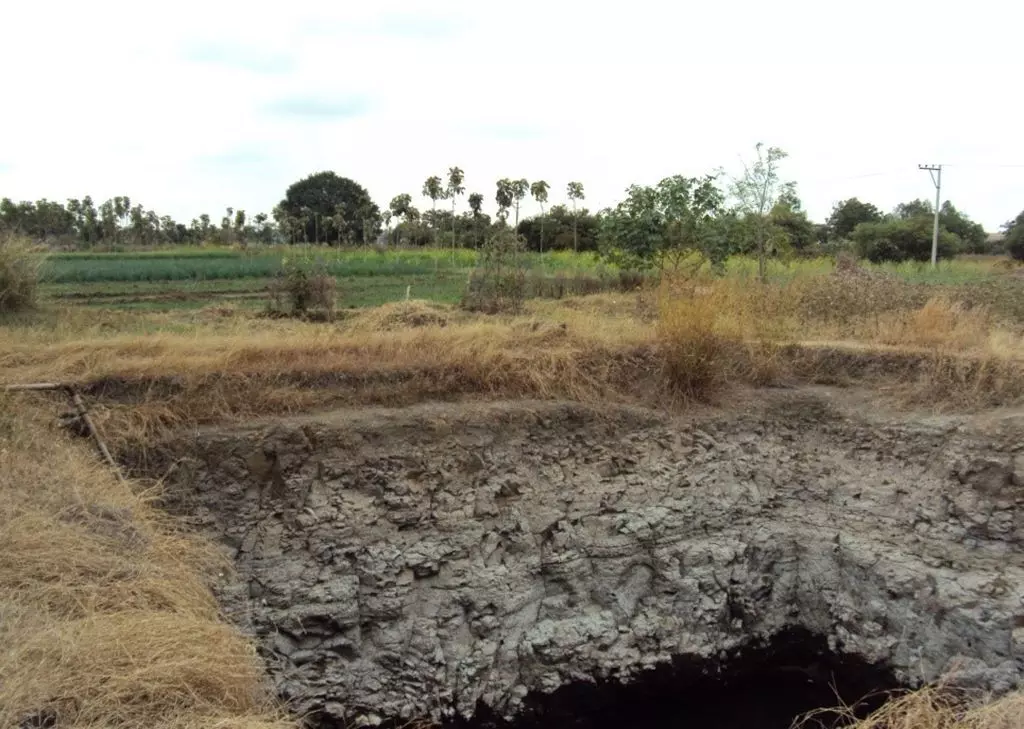ICRISAT Study: Human activity around lakes depletes groundwater more than climate change
Study found need for improved governance of water resources despite an increase in rainfall, there is a steady decline in flow to catchments.
By Newsmeter Network
Hyderabad: The indiscriminate cultivation of water-intensive crops in the catchment area of Himayat Sagar in Telangana is diminishing precious rainwater harvesting efforts through the excessive use of groundwater, an ICRISAT modeling study has revealed.
The findings point to a need for the improved governance of water resource sustainability which remains a critical challenge, particularly in semi-arid regions where despite an increase or no change in rainfall, there is a steady decline in the streamflow of catchments.
"We observed that nearly 50% of the water harvested by hydrological structures helps to increase groundwater recharge. However, crop area expansion using groundwater for irrigation has depleted streamflow and groundwater storage in the Himayat Sagar catchment," Dr. Rajesh Nune, Hydrologist, IDC said.
"The annual groundwater recharge in the catchment is able to fully meet the irrigation requirement during high rainfall years, 50% during dry years and 30% during normal years," he said.
Researchers at the ICRISAT Development Center (IDC) studied historical data on climate, land use, watershed structures, and groundwater levels available with the Telangana government organizations and conducted field surveys to gather data on groundwater utilization for different cropping systems during the rainy (kharif) and post-rainy (rabi) seasons.
The data was analyzed using an integrated hydrological model called 'Modified Soil and Water Assessment Tool (SWAT).' The approach combines SWAT's rainfall-runoff model with a groundwater model for each of the 19 sub-catchments in Himayat Sagar. The model is structured to capture dynamic changes in climate variability, land use, and watershed development structures in the catchment.
Adaptation to climate variability in the future
The ICRISAT-led study also explored the future impact of potential climate and catchment changes on streamflow and groundwater storage in the Himayat Sagar catchment.
The model explored factors such as expanding groundwater irrigated areas, watershed structures, and rejuvenation of existing tanks under the Telangana government's 'Mission Kakatiya' in the future.
Notably, Telangana is expected to witness the highest rainfall in September instead of August by the end of this century in light of rising temperatures (0.60-0.90C every 30 years) and climate change.
ICRISAT's findings reveal that despite the increase in average rainfall, a decline in streamflow is expected, considering variations in seasonal rainfall in the months of May and November.
Critically, the study observed that catchment changes would have a more significant impact than climate change (rainfall and temperature) in the future.
Under the 'Mission Kakatiya Program,' village tanks were desilted, rejuvenated, and interlinked with the drainage network. According to model predictions, this mitigation strategy captures excess runoff, enhances groundwater recharge for upstream users, and helps control flood damage to downstream users during high-intensity rainfall events.
"It is also necessary to have a better water resource governing policy for the administration of village tanks, especially during the dry years, for the benefit of downstream users," said Dr. Rajesh Nune.
Efficient planning of cropping systems based on available resources
ICRISAT's modeling has been designed to inform better public policy leading to improved natural resource management and enhanced farming productivity.
"The analytical framework ICRISAT has employed will help policymakers to take appropriate measures to monitor the cultivation of water-intensive crops (paddy, sugarcane, maize, etc.) and guide farmers to diversify their crops while ensuring efficient use of water resources in their region," said Dr. Rajesh Nune.
"Understanding the impact of climate variability on streamflow and groundwater recharge along with land use change will help water resource managers adopt better landscape management practices in the catchments for current and future water requirements," concluded Dr. Sreenath Dixit, head of IDC.